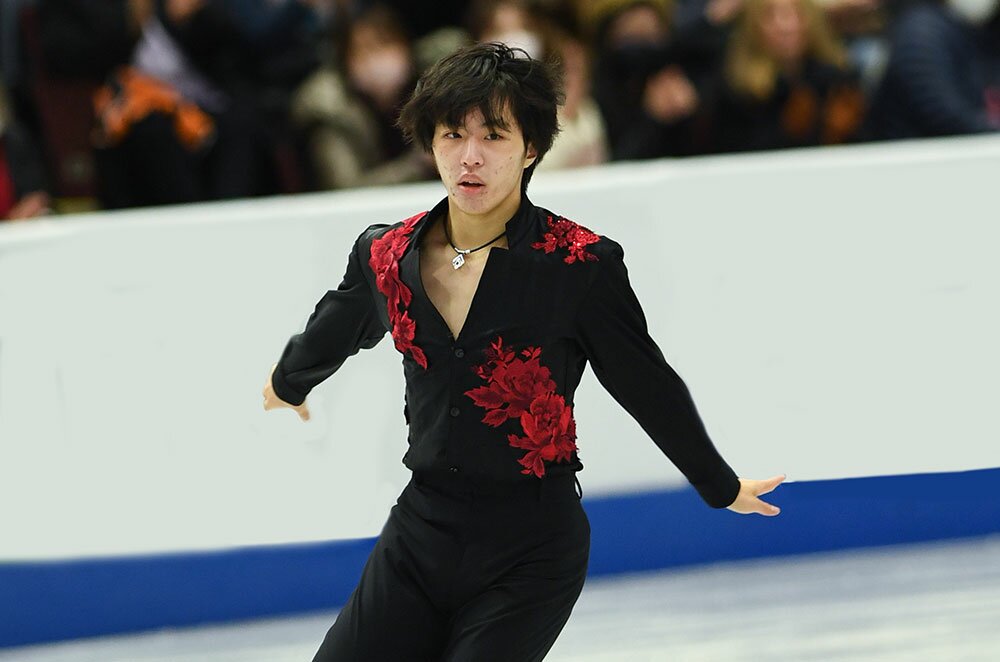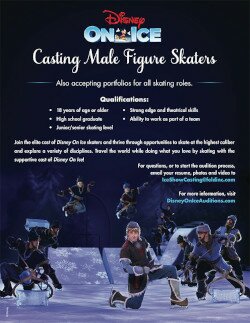

Kao Miura believes the time is right to assert himself as one of the next big names in Japanese men’s skating, and he has wasted little time showing the world he is a force to be reckoned with this season.
The 17-year-old from Yokohoma got out of the gate quickly in the Grand Prix Series, earning silver medals at both Skate America and Skate Canada International in consecutive weeks. The results already have Miura in prime position to land one of six available spots at the Grand Prix Final in December in Torino, Italy.
While he entered the season with a new level of confidence, Miura admits to being a little bit overwhelmed by his early success in the 2022-2023 campaign.
“These results have been totally unexpected,” he said through a translator after collecting his silver medal at Skate Canada in Mississauga, Ontario. “When I went to Skate America, I was thinking that maybe if I do well, I could be on the podium. Once I got the second position there, I came into this competition thinking maybe if I do well here, maybe (it could happen again). So it has been totally unexpected so far.
It was also a busy two-week stretch for Miura, but he was happy with the way he was able to handle the back-to-back major competitions. What did help his cause was the relatively close distance between the two host sites. Skate America was held in the Boston area (in Norwood, Massachusetts), so it was a short flight between there and Toronto to get to Skate Canada.
“From the States to Canada, there is no time difference and I was able to move from A to B… it took me an hour and a half. So I was able to get everything done. It was good for me. Now I want to go home to Japan now and relax a little bit.”
Even with two-time Olympic champion Yuzuru Hanyu no longer on the competitive circuit, Japan is still a nation chock full of talented men’s skaters. Reigning World champion Shoma Uno remains on the scene — he was the gold medalist at Skate Canada — as does Yuma Kagiyama, the runner-up at 2022 Worlds in France. But Miura finally sees an opportunity to work himself into a top three position in his country.
“Until now, Yuzuru was there, Shoma was there, Yuma was top three. So there was a wall I could not reach (beyond) … I could not get to this point,” he explained. “But now that Yuzuru has retired from competitive skating, the battle for the third spot (among Japanese men) is very fierce.
“It is very competitive with Sōta (Yamamoto), Sena (Miyaki), Kazuki (Tomono), Tatsuya (Tsuboi) … But I want to be at the top of the group competing for that third spot.”
At last year’s All Japan Figure Skating Championships, Miura — who had earlier won the junior national crown — finished fourth behind Hanyu, Uno and Kagiyama.
While that trio would represent their homeland at the Olympic Winter Games in Beijing, Miura was instead assigned to the Four Continents Championships, which were held in Tallinn, Estonia. It would end up being a breakthrough competition for him.
“At Four Continents I was able to place third, and that gave me the confidence that I could be good enough to be on the podium. That really drove me to win,” he explained. “It kind of proved to me that I can actually participate in a competition on the world stage with other athletes. So that was the motivation I had … I wanted to continue this momentum that I had and do well this season.”
Until that result, Miura’s international experience was limited to a pair of NHK Trophy appearances where he finished sixth and eighth, respectively, the last two years, and two Junior Grand Prix events.
When Hanyu withdrew from 2022 Worlds, Miura was selected to take his place, but he also had to withdraw because of a quadriceps injury. He would later compete at the World Junior Championships, where he placed 13th.
Miura is perhaps best known for his jumping ability. He said he landed his first quadruple jump (a quad toe) at age 12. Two years later, he would become the youngest Japanese skater to land a quad toe in an international competition, a feat he achieved at age 14 at a Junior Grand Prix event in Latvia.
This season, his long program includes four quads (loop, Salchow and two toes), with another two slotted into the short. Miura was forced to change the order of jumps for the free at Skate Canada after an equipment failure cut short his warmup.
“Because my boot lace snapped during the six-minute warm-up I had to get off the ice and I could not try the quad loop. I was planning to go for it even if my condition wasn’t great, but attempting it without trying it even once during the warm up was a bit too reckless, so I decided to leave it out,” he explained.
“The quad loop was in my planned components, but I had to avoid it. In fact, even after I mended my boot lace, I could feel that my boot was a bit soft and I didn’t want to try it. Since I wasn’t totally confident in it, I didn’t include it in my free program. That’s why I changed the composition of the program.”
Coached by Noriko Sato, Nobuko Fukui and Koji Okajima in Yokohama Miura no longer considers his jumping ability to be his only strength, and feels he has become a more well-rounded skater.
“My top quality is my speed. Speed allows me to do well in elements and speed also allows me to have dynamic skating,” Miura explained. “I have the dynamic expression, but I can only have that because of the speed. It is three dimensions of skating that I am really good at.”
Given his results to date this season, Miura has made it clear he intends to be a contender on the international scene. At both Skate America and Skate Canada, he won the short program, but wound up second behind young American prodigy Ilia Malinin in Norwood and one spot back of Uno in Mississauga. Each time, Miura was about seven points shy of the gold-medal winning score.
At Skate America, Miura produced personal best scores across the board, for the short (94.96) and long programs (178.23), and overall total (273.19). Interestingly, the latter score was .04 points higher than Uno’s winning total at Skate Canada.
“At the previous competition (Skate America), Ilia skated before me in the free and jumped the quad Axel. That was a lot of pressure, so it was a good practice for today,” said Miura. “I was hoping I would not have to skate last in free here. But I had to skate after Shoma and that was a lot of pressure. But at least I experienced that at Skate America.”
All of this is heady stuff for a young skater just starting to make his mark internationally, and now he must ponder the prospect of competing alongside the sport’s elite at the Grand Prix Final. It is an opportunity he will relish if it indeed comes to him.
“As far as the Final, if I am able to go there, I will try to do my best,” he said. “I will prepare myself as best as I can so I can skate to my full potential.”
RELATED CONTENT:
2022 GRAND PRIX SERES
2022 CHALLENGER SERIES
2022-2023 COMPETITION CALENDAR




